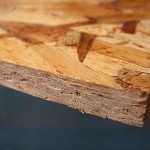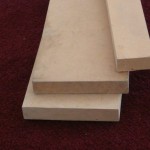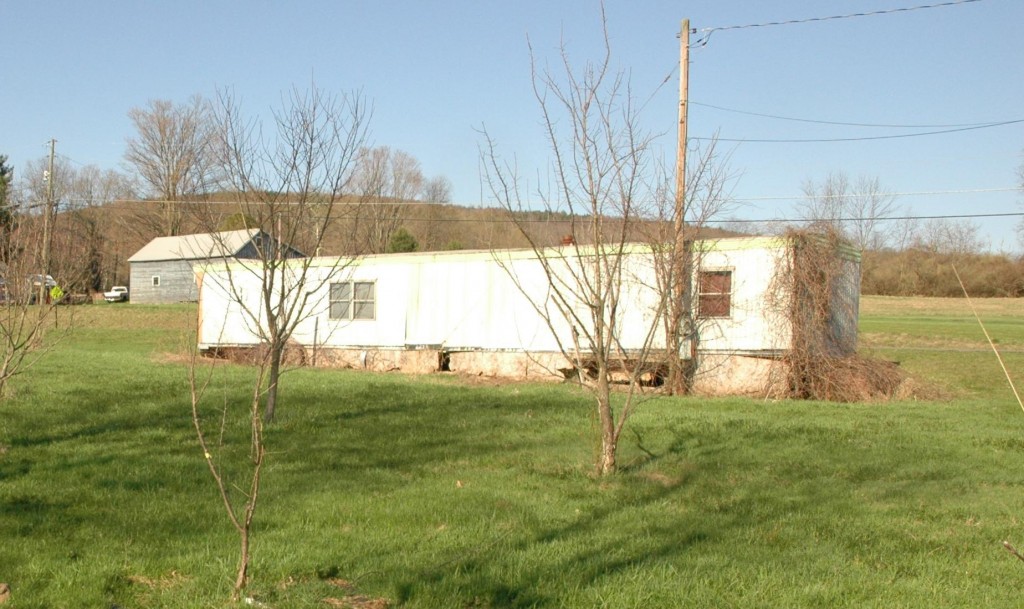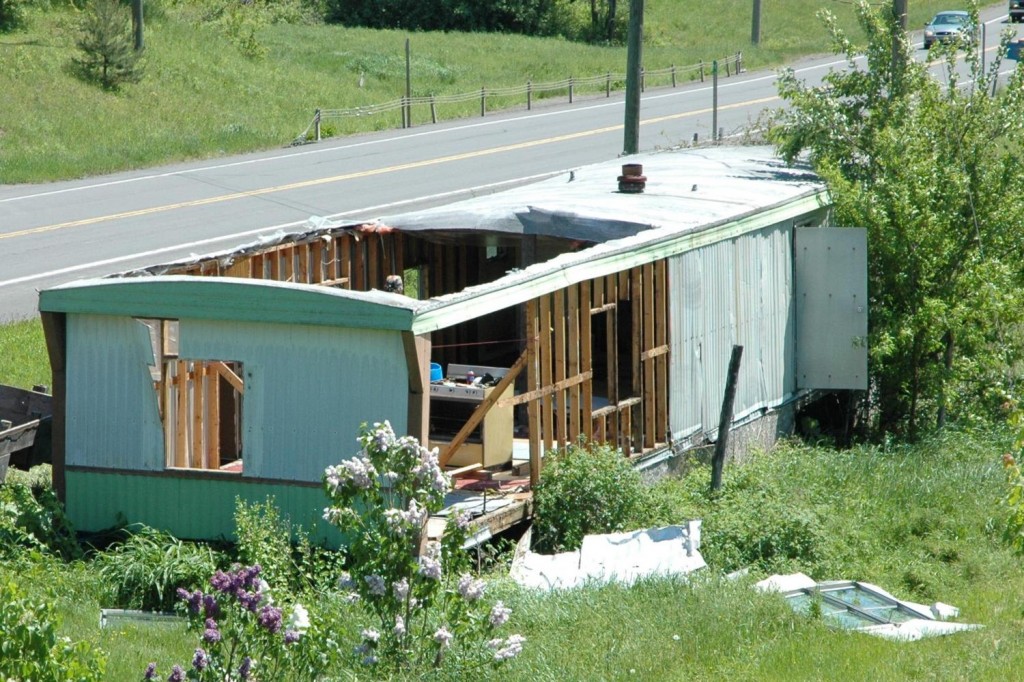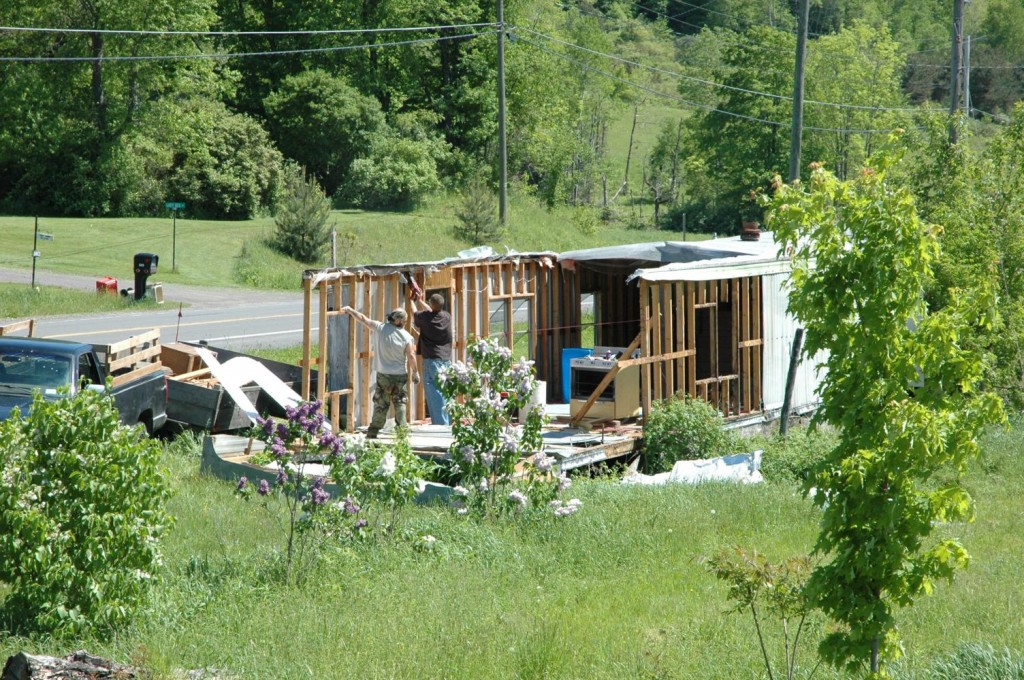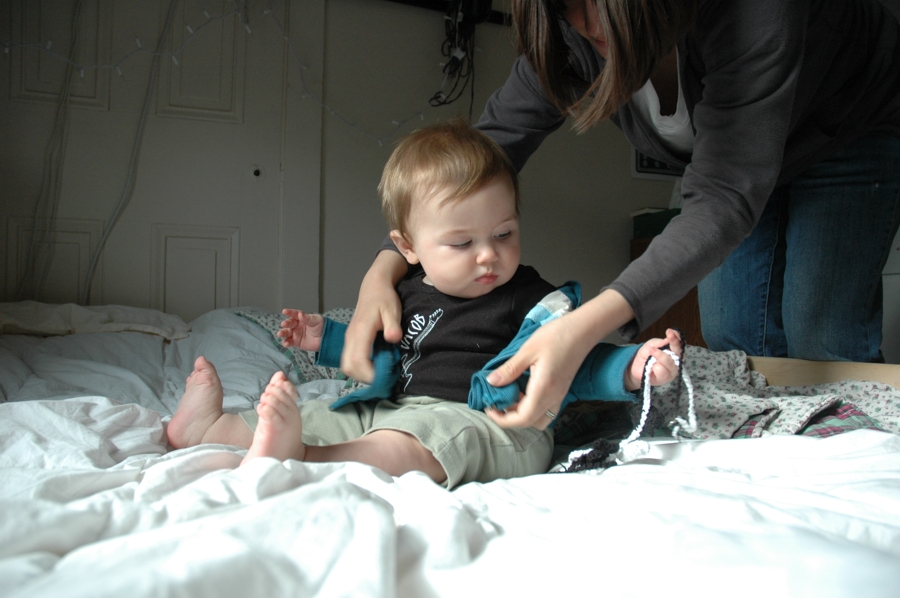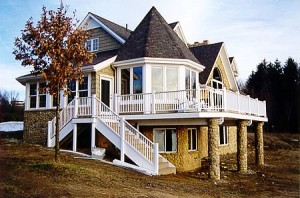As you know if you’ve been following the blog, we’re committed to building a healthy house. Guess what gas makes up most indoor air pollution? (Hint: it’s right in the title of the post…) Yup, it’s formaldehyde. Formaldehyde is a component of glues used in making most types of engineered wood products: plywood, OSB (aka chipboard), MDF, particleboard, etc. Formaldehyde is used because it’s cheap and strong. Unfortunately, it’s also toxic in large quantities and can cause cancer in small quantities. More importantly, various types of engineered wood can outgas formaldehyde for years and years after they’re made.
Also unfortunately, engineered wood is everywhere! Major sources of formaldehyde indoors are:
- Furniture. Pretty much all furniture nowadays uses particleboard, and particleboard leaches formaldehyde. Of course, Megan and I haven’t gotten around to furnishing our house yet, but when we do we’re going to try and use as much solid-wood furniture as possible. Some of it we’re going to make ourselves, some of it will be re-vamped antiques and some of it we’ll buy new. Believe it or not, there are a couple of companies out there that make ready-to-assemble furniture out of solid wood, and they’re not even that much more expensive than the particleboard stuff.
-
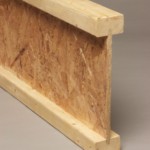
This is a composite wood I-beam. Picture from this website.
Walls. Specifically, the sheathing, which is the layer around the outside of the house to which the siding is attached. Fortunately we’re building with ICFs, which means we’re not using sheathing, so this is not a problem! (By the way: the expanded polystyrene — EPS — used to make ICFs also outgasses. But it outgasses pentane, which is nowhere near as toxic as formaldehyde and has no long-term health effects.)
- Floor Joists. Traditionally, floor joists were just great long boards of untreated timber that came straight from the lumber mill and didn’t outgas anything. Nowadays, wooden I-beams have become very popular. Their advantage is that they can bridge larger spans without needing extra support (such as our wide-open dining room/living room area). The disadvantage is that they use engineered wood, which means formaldehyde-based glue.
- Sub-floor. In older houses (such as the one we’re living in now), these were just regular untreated boards nailed down over the floor joists. Nowadays, plywood is used because it’s cheaper, flatter and changes less due to swelling, drying and warping. Plywood releases formaldehyde.
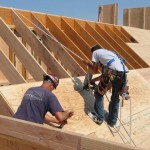
Workers putting down roof sheathing. Picture from this website.
- Hardwood Floor. We want to have hardwood floors throughout most of our house. The traditional way to do this is to nail down regular hardwood boards and then finish them with some kind of sealant. But you can also get engineered floor, which has the advantages of being less work to install, easier to soundproof and doesn’t have to be sealed (most sealants outgas as they cure), which are all important things for us. The drawback? Most engineered floors use plywood bases.
- Roof. Roof sheathing, which is the outer layer of the roof to which you attach the shingles, is usually some kind of engineered wood.
So what are we doing to deal with these sources of formaldehyde? Several things! But I’m leaving that for another post, because this one is getting long.
And now, we interrupt our broadcast to bring you pictures of a beautiful baby:

